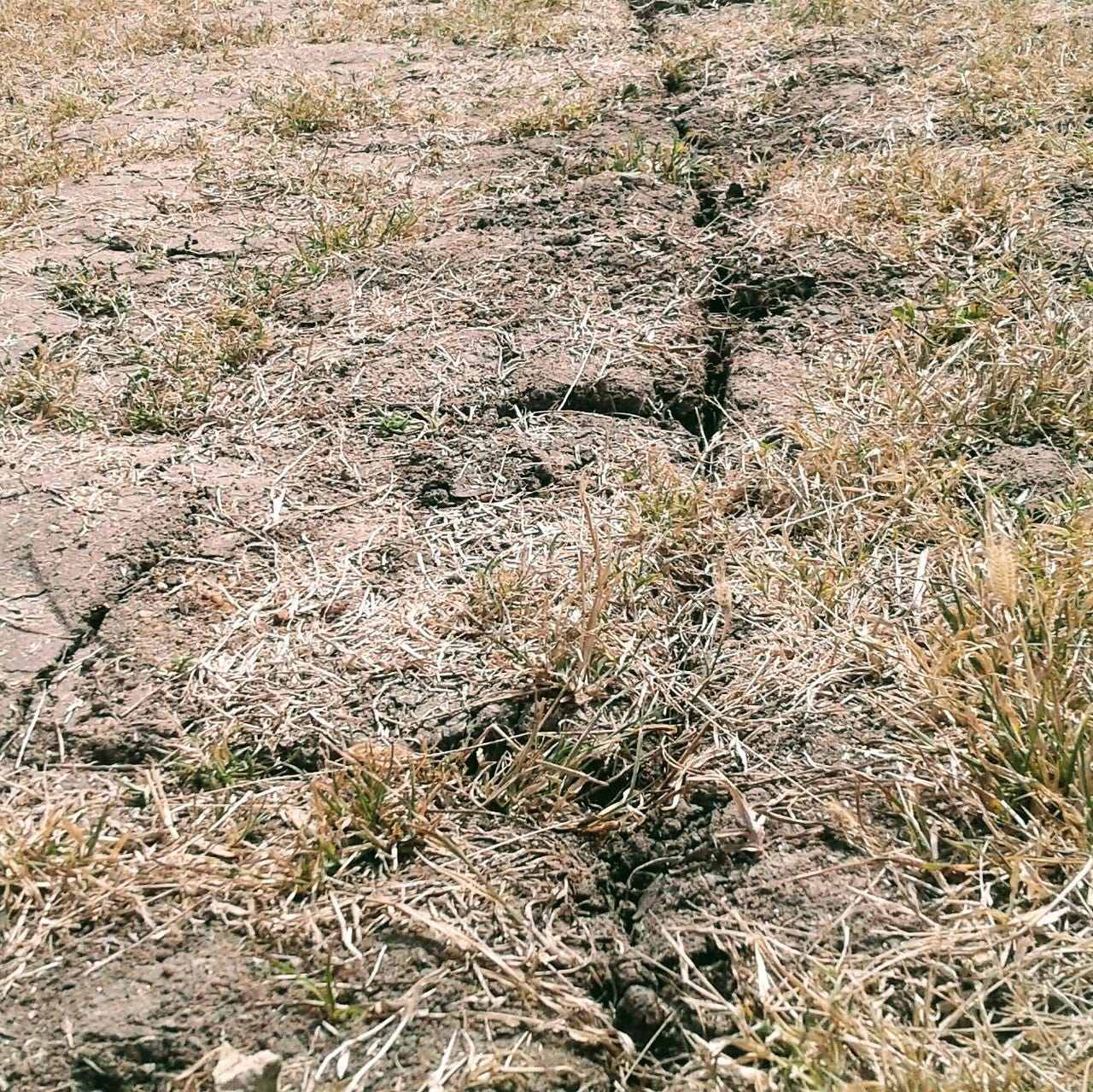The Soil We Eat *
Is Killing Us (And May Cause Societies to Collapse)

// Is Killing Us (And May Cause Societies to Collapse)
* Remember Richard Manning’s influential 2004 Harper’s essay The Oil We Eat ? I do.
Why did the Roman Empire collapse again? Wasn’t it something about the barbarian hordes? Or the rise of Christianity and the inevitable eclipse of the decadent pagans? Wait…maybe it was the lead in the pipes beneath the Palatine Hill?
Here’s another hypothesis: the Emprie collapsed because the Romans weren’t paying attention to the ground under their feet. According to geomorphologist David R. Montgomery, the author of Dirt: The Erosion of Civilizations (and The King of Fish, and Growing a Revolution, and many other unusually readable popular science books), some of history and pre-history’s greatest civilizations lasted for just ten centuries—and there’s a reason for that.
Çatalhöyük, in central Turkey, the early Neolithic’s largest settlement, endured for just over a millennium. The Roman Empire also lasted for about one thousand years, as did the civilizations of the Greeks and of the Maya. The causes of civilizational decline are complex, but one of the simplest may lie in a failure to tend to the foundation of farming, the dirt under our feet. As Montgomery puts it, “Soil erosion that outpaced soil formation limited the longevity of civilizations that failed to safeguard the foundation of their prosperity—their soil…Rome did not so much collapse as consume itself. While it would be simplistic to blame the fall of Rome on soil erosion alone, the stress of feeding a growing population from deteriorating lands helped unravel the empire.” Libya was once a granary of the Empire; though the climate of what was once the lush province of Cyrenaica hasn’t changed radically, the area is now desert—because the soil was sucked dry of nutrients to feed Rome, the Caput Mundi. The exceptions prove the rule: the civilization of ancient Egypt, for example, lasted for 3,000 years, but only because its agricultural system was based on the flooding of the Nile, which replenished river-adjacent fields with nutrients every year.
Soil formation is a glacially slow process: it takes at least two centuries, usually more, for just an inch of topsoil to form. We rely on this “delicate blanket of rotten rock,” as Montgomery calls it, for all our nourishment; topsoil accounts for just one to three feet of the 4,000 mile radius of the earth, but without this layer, we cease to exist. These days, industrial agriculture is burning through an inch every two decades. The current rate of soil degradation, as a global average, is approaching 0.5% a year. When agricultural scientists say that, at this rate, the world may have no more than 60 harvests left, they’re not exaggerating.
Good thing we’ve got chemical fertilizers to keep the soil fertile, right? Wrong: the chemicals are the problem. The Green Revolution has produced miraculous hybrid grains, which are now grown in mind-bendingly extensive monocultures, leading to a global surfeit of calories—overproduction. To bring these millions of hectares of rice, wheat, and corn to harvest, it’s necessary to deploy fantastic amounts of water, pesticides, herbicides, fungicides (in other words, -killers -killers -killers) and fertilizer. And to prep the land for these crops, it is plowed, which rips apart the soil and shreds worms and roots, destroying the complex microbiome that is the characteristic feature of fertile topsoil. Heavy metals, dioxins, and nitrogen accumulate in the ground, and take decades to dissipate. Healthy soil, the layer beneath the humus, is chocolate-colored, humid, and held together by fungi, roots, and rhizomes. Chemically treated soil is khaki-colored, dry, and crumbles underfoot. It is a blank slate, devoid of life, and thus the potential to truly nourish.

Advocates for this form of agriculture argue that it is the only way to feed the 8 billion—and counting—people on earth, and that if we turn our backs on chemical fertilizers, pesticides, and herbicides, we condemn the world to mass starvation. (Not surprisingly, this is the line taken by Nutrien, Koch, Mosaic and other monopolistic fertilizer companies; what is more surprising is that “mass starvation” is the bogeyman invoked by environmental journalist George Monbiot when he makes his case against, of all people, the small farmers of England.) One rejoinder is that we have already condemned much of the world—at least the billions who rely on the products of industrial agriculture—to malnutrition. Complex, living soil provides the range of micronutrients that helps humans thrive. Chemically-simplified, dead soil is a medium for the production of basic macronutrients that allow us to survive, but just barely—we may be able to maintain our lifespans, but our healthspans are in sharp decline.
Pace the chemical fertilizer giants, and Monbiot, we can feed the world with traditional farming techniques. In his books and travels, Montgomery describes many examples of agriculture that, rather than exhausting it, have enriched the soil over millenniums: terra preta, the biochar-enhanced soil found in the Amazon, west Africa, and even some Scandinavian countries; the remarkable example of the garden-island of Ticopia, with its overstory of breadfruit and coconut and understory of yams and taro; and the terrace agriculture of the sixteenth-century Inca, whose soil is so rich it remains productive to this day. To this you can add the chinampas, or raised field systems, which allow multiple annual crop harvests in water-rich milieux, such as Mexico City, some parts of Poland, and Bangladesh. And Montgomery has chronicled contemporary examples of regenerative farmers in the US whose practices, if not strictly organic, are actually bringing dead, chemically depleted soils back to life.

There’s a catch: most of these systems involve using traditional forms of fertilizer, the most common of which is the manure supplied by livestock. (We can easily fertilize the crops of the world, by the way, if we use a system that fed urban millions in pre-Contact Mexico City, in Edo-era Tokyo, and in pre-Revolutionary Shanghai: collecting nightsoil—valuable and nutrient-rich human manure—to fertilize crops.) Manure is the key to restoring grasslands, which is why many ecologists call for a “Buffalo Commons” to bring plant life black to the industrial-agriculture-diminished Great Plains. But the agricultural subsidy system, which kicked into gear in the US in the 1920s, and has since spread through the world, encourages the separation of cropping and animal husbandry, in the name of greater productivity and higher yields. This separation of functions (a hallmark of modernism that, in the guise of Taylorism, fractured the skilled artisan into a bevy of specialized factory workers, and also separated our cities into residential, work, and industrial zones, linked by highway and automobiles) has torn asunder what was once whole: the complete, multi-generation-sustaining, hard-to-tax, food-production system that was the small mixed farm.

Montgomery is an optimist. After despairing of the erosion of civilizations, he’s chosen to tell the stories of the regenerative farmers, the neo-agrarians, the agrarian localists, practitioners of conservation agriculture—whatever you want to call them—who are trying to put things right, by using cover crops, for example, or no-till farming rather than the plow. (There has been a big no-till revolution in the United States in the last couple of decades, with up to one-third of cropland now spared from plowing.) That was my strategy, too, in my book The Lost Supper: accentuate the positive, and celebrate the food producers who are getting things right. Rather than afflicting the already sorely afflicted—the struggling, oft-disparaged farmers of the world.
Here’s the takeaway: don’t look to the future for solutions—that is, to the Wizards and Techno-Hucksters who say a world-saving breakthrough (driverless cars, cold fusion, hacking photosynthesis) will arrive in five, ten, twenty years, tops, trust us. Instead, look to the past. Because in the 11,000 or so years since agriculture began, there are lots of times and places where we’ve done it wrong, or merely adequately; but there are also lots of places where our ingenious species has got it right. And those places, and times, and techniques, are the guideposts we need to keep this project, the faltering, imperfect, astonishing, human project, going forward.
